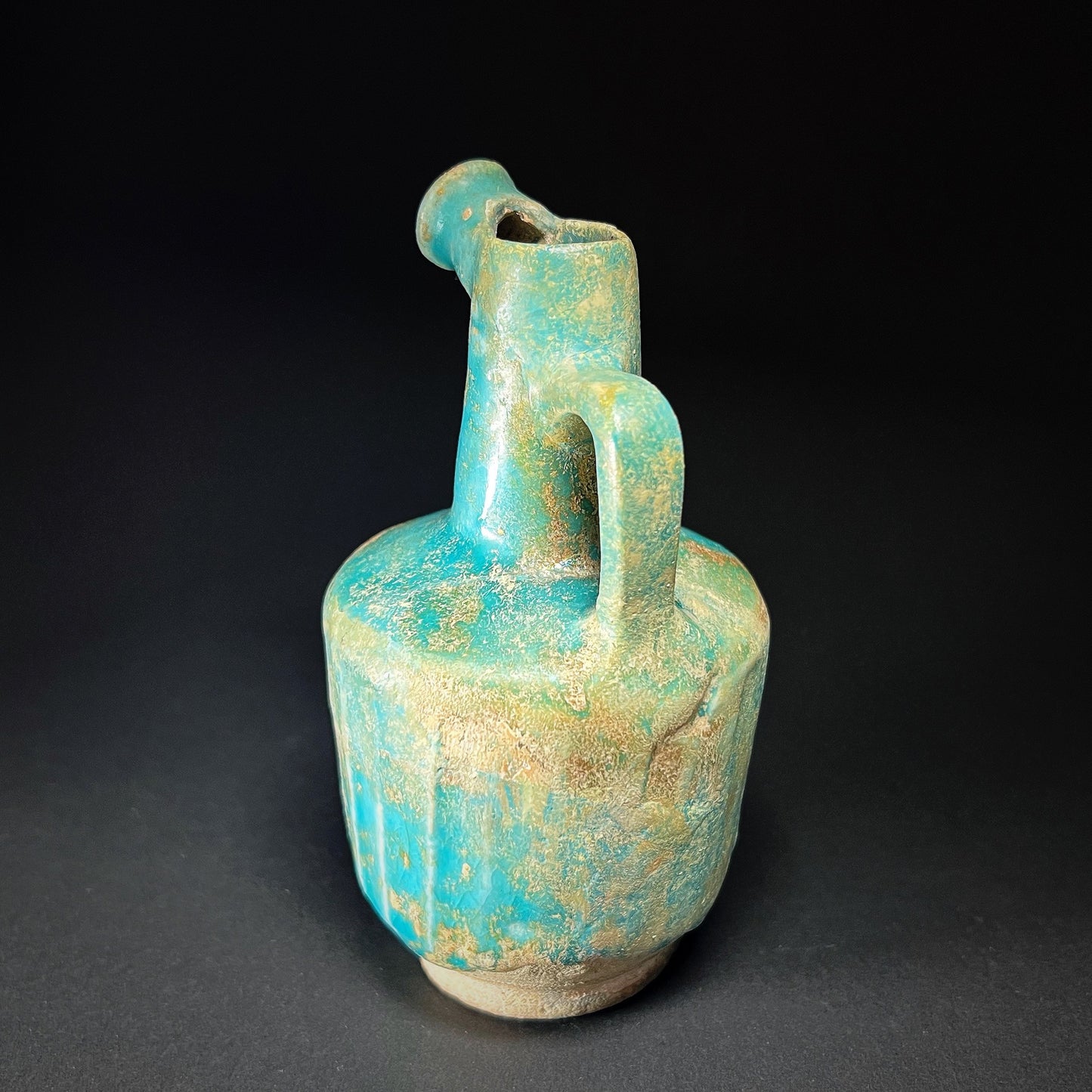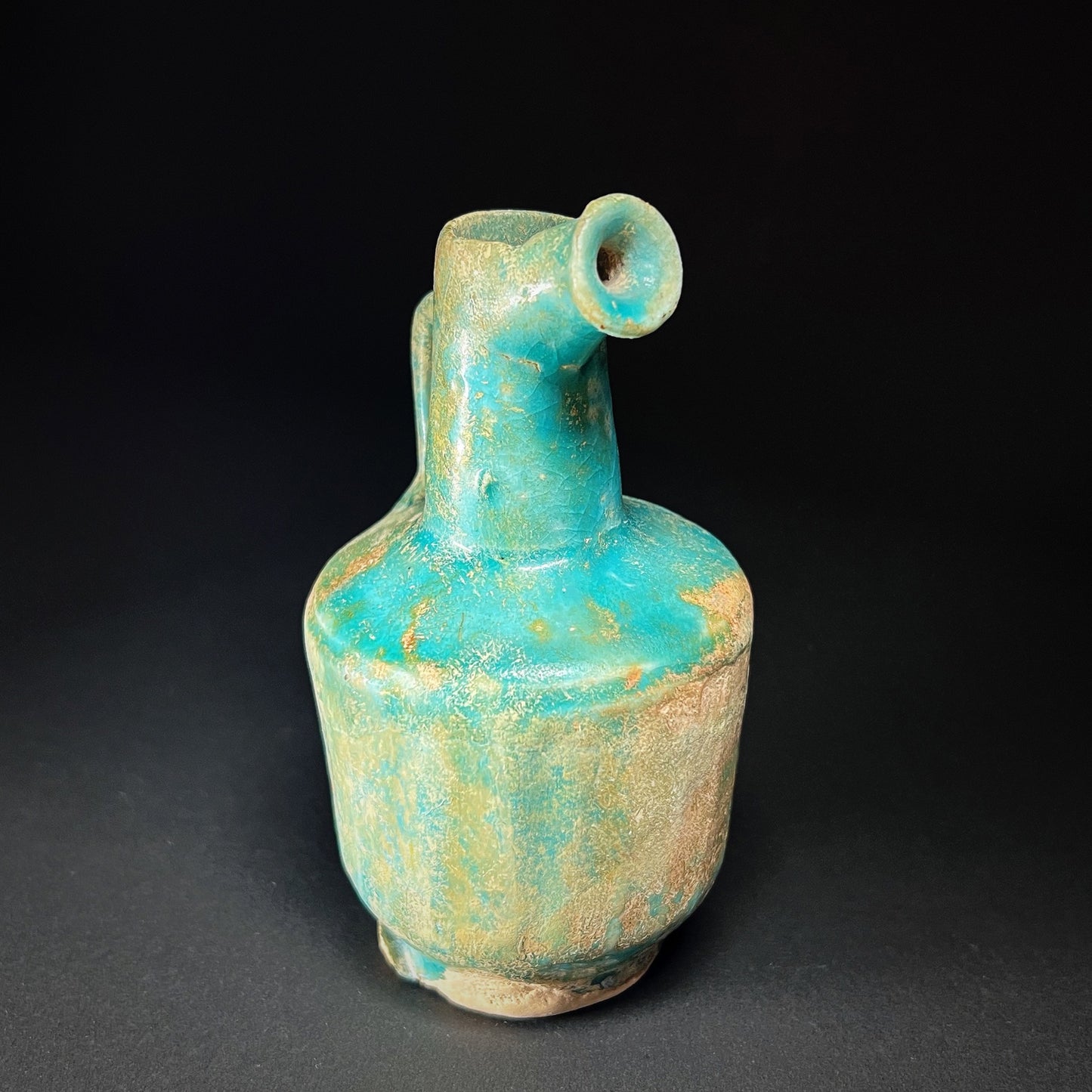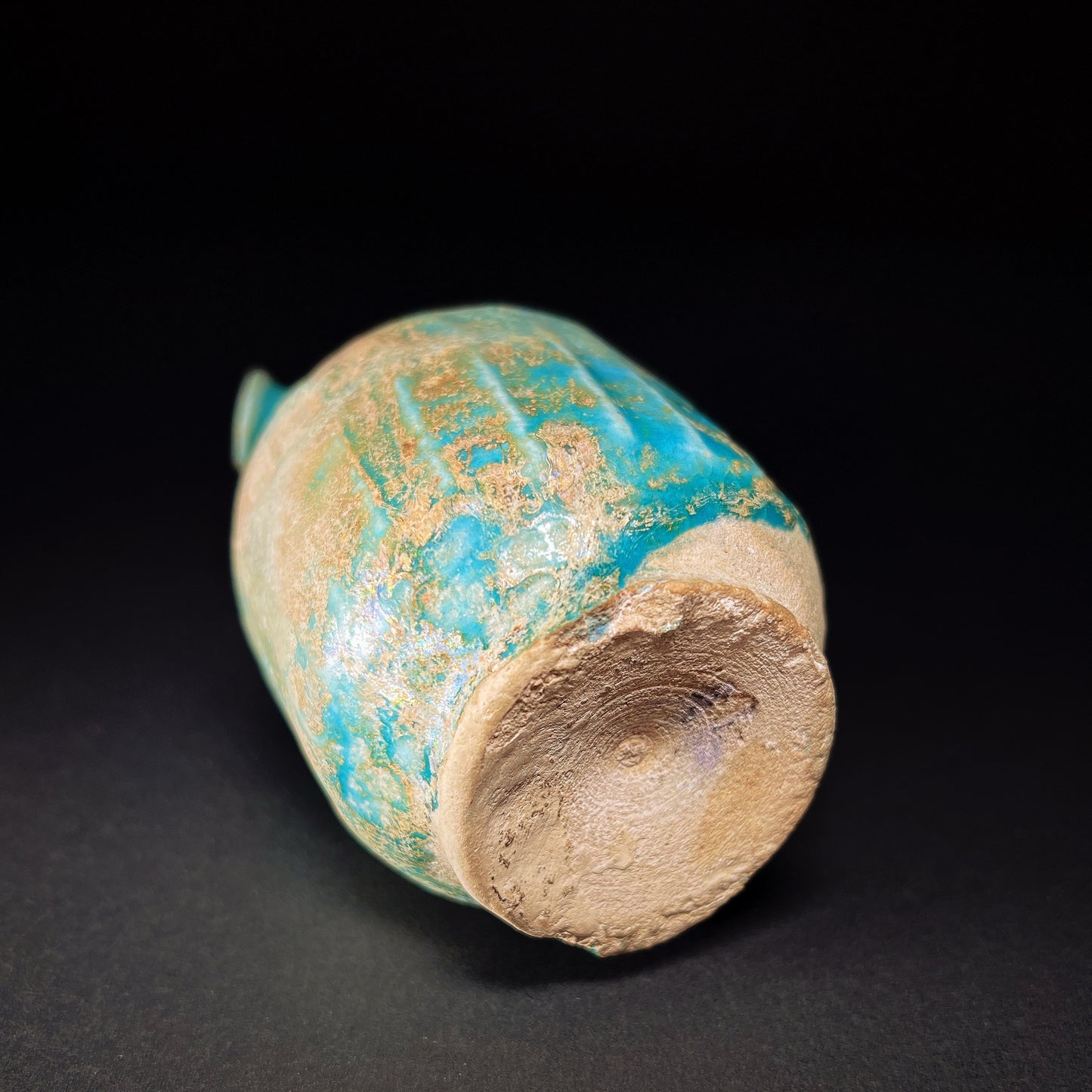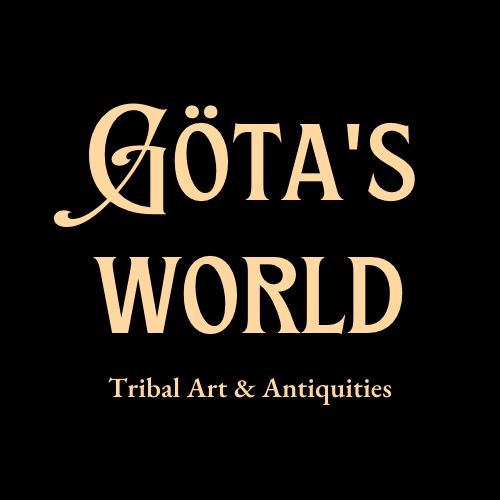Seljuk Kashan Turquoise-Glazed Pottery Ewer
Seljuk Kashan Turquoise-Glazed Pottery Ewer
Couldn't load pickup availability
The Seljuk Empire, c. 1037–1194 AD, Kashan, Persia
A magnificent and rare example of medieval Islamic craftsmanship, this turquoise-glazed Kashan ewer is a stunning piece of Turko-Persian artistry. Modeled after metalwork forms, the ewer rests on a short straight unglazed foot with a slightly tapering cylindrical body adorned with vertical flutes, showcasing the exquisite molding techniques of the time. The rounded, sloping shoulder leads into a slender neck, and the horizontal tubular spout, with its circular opening, is complemented by a graceful curved handle.
The rich turquoise glaze has a captivating quality, thinning at the edges and attractively pooling and darkening in the recesses. The glaze's iridescence adds a mesmerizing effect, highlighting the masterful glazing technique employed by the artists of Kashan, a city renowned for producing high-quality pottery during the Seljuk period.
The Seljuk Empire (1037–1194 AD) was a high medieval Turko-Persian Sunni Muslim empire, with its territory spanning from Anatolia to the Hindu Kush at its greatest extent. Kashan, located strategically near important mineral sources, was particularly known for its production of frit-ware pottery. The use of copper oxide in the alkaline glaze created the striking turquoise color, which is now iconic in Persian pottery and echoes the classic Egyptian turquoise glazes of antiquity.
An exceptional and historically significant artifact, this turquoise-glazed ewer is a remarkable example of Seljuk pottery and would be a prized addition to any collection of Islamic art, medieval ceramics, or Persian antiquities.
Excellent condition. Intact. Wear commensurate with age and use. Intentional glaze crackling and discoloration to the glaze due to misfiring. Size approx. 13,8cm x 7,5cm x 7,5cm.
Provenance: Finnish private collection
For a similar example see:
Ewer, The British Museum, Accession Number: 1910,0511.1 (https://www.britishmuseum.org/collection/object/W_1910-0511-1)
References and further reading:
Seljuk Turks, History Maps. (https://history-maps.com/story/Seljuk-Turks)
Seljuk Turks, New World Encyclopedia, April 21, 2023. (https://www.newworldencyclopedia.org/p/index.php title=Seljuk_Turks&oldid=1109731.)




-
Shipping
The shipment will be prepared in the course of 3-5 days and dispatched via Posti Group Oyj or purchased item(s) can be picked up from our shop during the store's opening hours (Tarkk’ampujankatu 4, 00140, Helsinki, Finland). Within the Finland, all items are shipped via Posti Group Oyj unless otherwise requested. We pack the items carefully and mainly in recycled materials because we want to save nature. You will receive the tracking number for your items by e-mail.
-
Returns
Returns and exchange will be accepted within fourteen days (14) of receipt at the purchaser’s cost to include freight and packaging. Items must be returned in the same condition as when they were shipped, and will not be accepted if damaged or altered in any way. Please inform us via email (info@gotanmaailma.fi) or by calling +358408408352 before sending. We do not accept returns more than 14 days after delivery.




